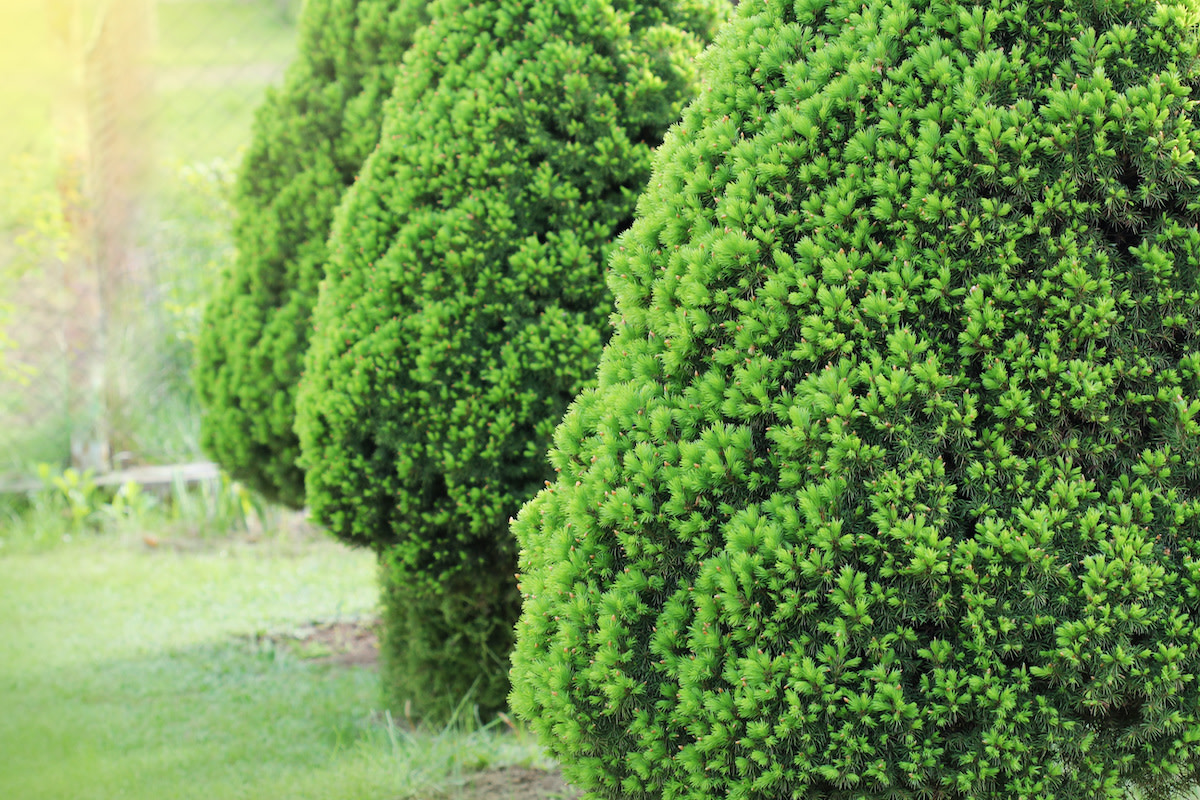How to Grow a Dwarf Alberta Spruce at Home
Written by MasterClass
Last updated: Jul 8, 2021 • 3 min read
The dwarf Alberta spruce is a coniferous evergreen tree that can accent your lawn.
Learn From the Best
What Is Dwarf Alberta Spruce?
The dwarf Alberta spruce (Picea glauca ‘Conica’) is an evergreen conifer tree native to Canada and the northern US. The dwarf Alberta spruce is a cultivar of white spruce (Picea glauca) and grows in a pyramidal shape (Christmas tree shape) that can be fashioned in topiary spirals or pom poms.
The dwarf Alberta spruce is a small tree that reaches a mature height of 10 to 13 feet and only grows about two to four inches a year. Due to its slow growth rate and ease of care, these trees are a favorite of gardeners looking for a reliable focal point for their yard and landscaping. They are often used as foundation plantings and cover.
When to Plant Dwarf Alberta Spruce
Dwarf Alberta spruces are cold-hardy plants that thrive in USDA hardiness zones 3 to 8.
If you are transferring a tree from a pot to the ground, plan to do so in the spring after the last frost. Early spring is ideal because of the humidity and relatively cool temperatures. The growing season for dwarf Alberta spruces is late spring and summer, so it’s best to plant your tree before it begins to grow young shoots or new roots. They prefer full sun but can tolerate partial shade.
How to Grow Dwarf Alberta Spruce
You can propagate dwarf Alberta spruce from stem cuttings, but it can take a long time before your tree establishes itself. Landscaping your yard with these shrubs is easier if you buy the trees when they are already established, and replant them in your garden bed. Follow these steps to start planting your own dwarf Alberta spruce.
- 1. Select the location. Choose a spot in your garden that receives at least six full hours of sun a day. If you live in a particularly warm and dry climate, pick a spot that’s covered in shade for at least a part of the day.
- 2. Dig the hole. If transferring your spruce from a container, dig a hole as deep as your planter, and twice as wide.
- 3. Transfer the spruce. Remove your tree from its container, keeping the root system intact. Check the root ball for insect eggs and larvae as these crevices are a common breeding ground for bagworms. Place your tree in its new hole and make sure the roots are completely covered with dirt.
- 4. Cover the area. Spread a compost mix over the ground surrounding the base of your tree. Bark mulch can help prevent weeds and will also keep the ground moist, but be sure to not let the mulch touch the trunks of your trees.
- 5. Fertilize after planting. Watering your plant with diluted liquid fertilizer gives it a boost of nitrogen after the shock of moving. If the weather is dry and sunny, provide shade for your tree in the first three to four weeks.
3 Care Tips For Dwarf Alberta Spruce
The dwarf Alberta spruce is a relatively low-maintenance plant, but will still require some basic plant care. Keep these tips in mind when caring for your white spruce.
- 1. Water your spruce occasionally. Water your dwarf spruce when the top three inches of soil becomes dry. Trees that are planted in containers will require more water than the ones planted in the ground. Try watering your spruce once a week.
- 2. Watch out for pests and diseases. While dwarf Alberta spruces are generally deer-resistant, spider mite and bagworm attacks can kill your tree if they’re not addressed. A yearly preventative pesticide treatment will help keep these infestations at bay. Keeping your dwarf Alberta spruce in an area with good airflow will also help prevent the buildup of moisture that attracts insects.
- 3. Fertilize only at the beginning of the growing season. A small amount of diluted fertilizer will help your tree grow if applied early in the season, but too much can lead to rapid growth of young offshoots. This can drain energy from the rest of the plant, leaving it vulnerable to disease.
Learn More
Grow your own garden with Ron Finley, the self-described "Gangster Gardener." Get the MasterClass Annual Membership and learn how to cultivate fresh herbs and vegetables, keep your house plants alive, and use compost to make your community—and the world—a better place.
